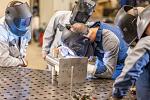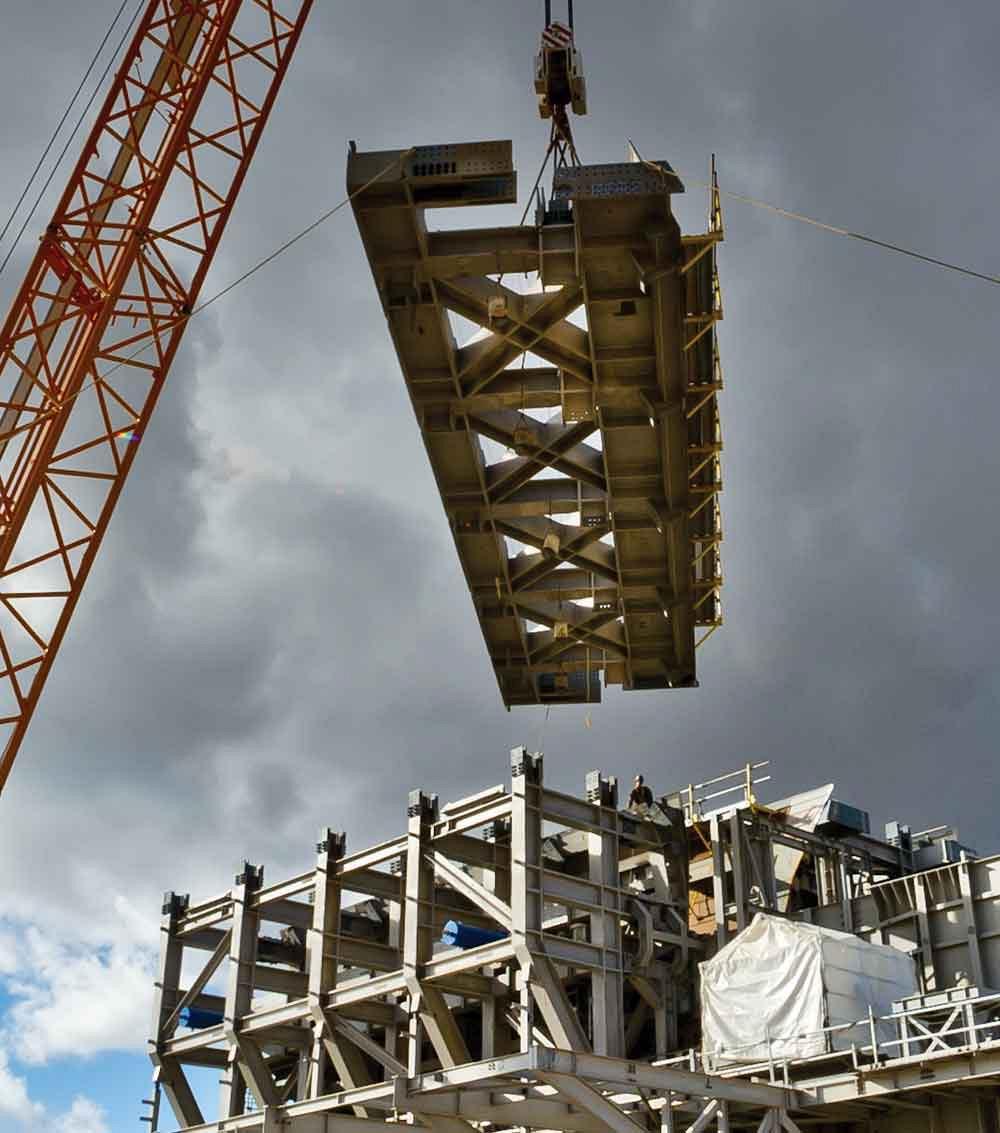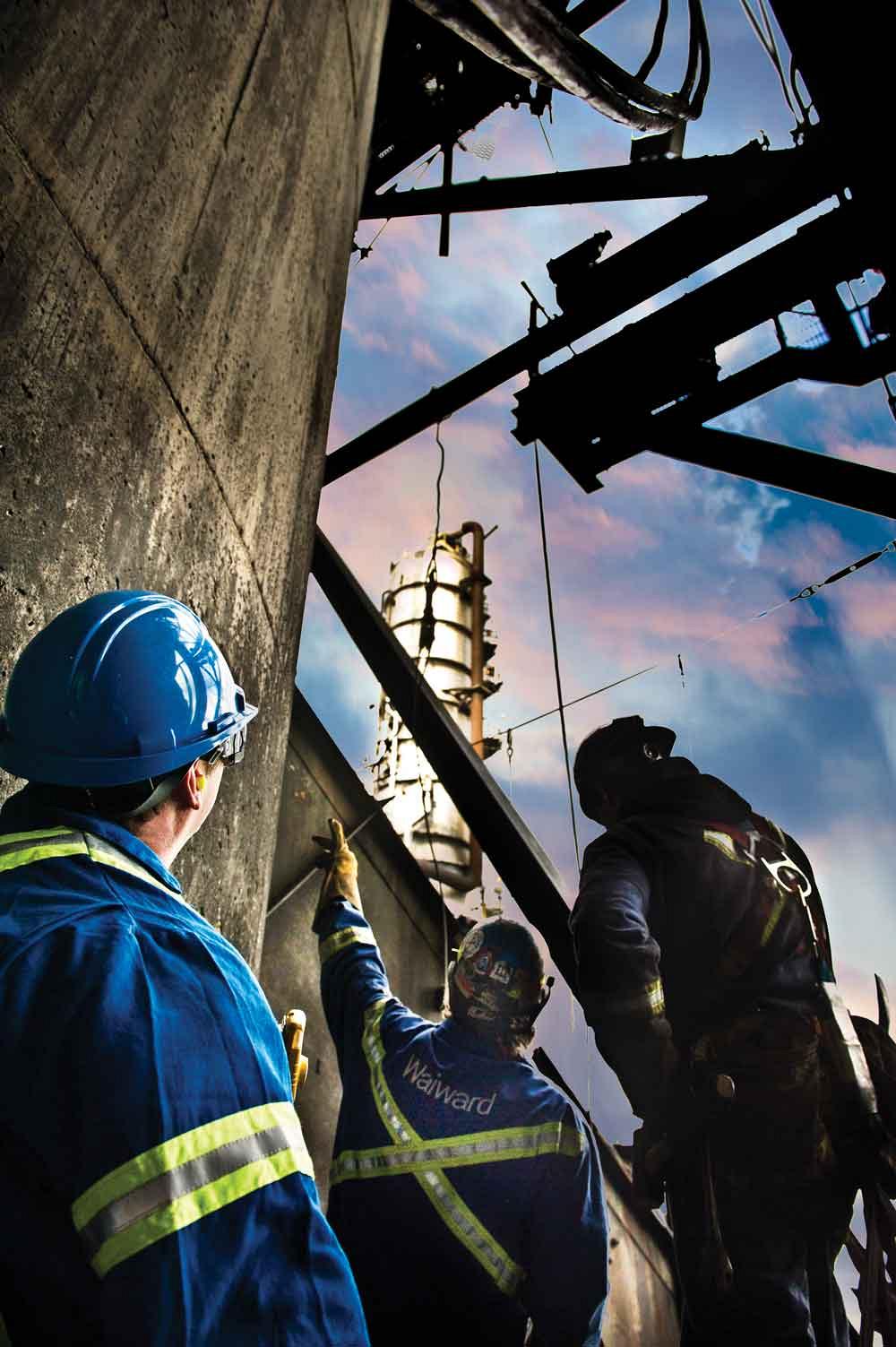Editor
- FMA
- The Fabricator
- FABTECH
- Canadian Metalworking
Safety in knowledge
Waiward Steel achieves 4 million working hours without a lost-time incident with the help of a new approach to skills management
- By Rob Colman
- December 20, 2016
- Article
- Fabricating
Waiward Steel, an Edmonton steel fabrication and industrial construction firm, recently celebrated an impressive milestone. It achieved 4 million working labour-hours without a lost-time incident (LTI). That is equal to 2,000 employees working 2,000 hours per year. In this case, it was approximately 800 workers contributing more than 2,000 hours per year over two years.
The company managed this feat after changing its approach to health and safety. Instead of considering health and safety in isolation, the company made it part of a new competency management program for employees.
The Big Fat Binders
Waiward has been part of the business community in Alberta since its founding in 1972. And despite challenging market dynamics in the area over the past few years, the company has remained financially healthy and busy, working on projects throughout western Canada. However, its approach to health and safety did need to be updated not that long ago.
The impetus for this change was a series of life-altering injuries and near-misses within the company.
“This was the period between 2010 and 2012,” said Jim Kanerva, Waiward’s chief operating officer. “We had what we believed to be a world-class safety program. We’d even won some awards, including a national award, and we thought we were doing the right things. Then we had a string of four fairly major incidents, and that really rocked our world and caused us to step back and think about what we were and weren’t doing, and really reflect on our culture.”
Kanerva calls the health and safety practices the company used previously “the big fat binders.” Although he believes Canada has been a leader in quality control and quality assurance programs, the procedures related to those QA/QC and health and safety programs can end up as a series of binders on the shelf that get dusted off once a year for external auditors. Kanerva said this can truly affect how you manage your employees.
In the end, the only reason the binders are there, for Kanerva, is to train employees to do their jobs safely and effectively. So Waiward decided to, in Kanerva’s words, “explode the binders” and start building a program for each individual classification of employee to learn their job.
The company started to come up with lists of competencies for each job on the floor and in the field. The first job tackled was journeyman ironworker. This job specialty ended up having a 30-page list of competencies, including reading blueprints, working at heights, and using a grinder. Everything was listed to ensure everything could be taught and tested.
Focused Training
Since that first test case, 140 competency profiles have been created for different job classifications. Now, before a person takes on a job, he or she has to be cleared through a variety of processes.
“Take grinding, for instance,” said Kanerva. “We are looking for objective evidence of what an employee can and cannot do. In this case, we need objective evidence that someone in an expert capacity has taught this person how to do grinding on the job. Then, this competence has to be witnessed – now you’ve collected evidence that something has been done on the job. Then, if you’ve got an operating procedure for a specific job, an internal course that teaches someone how to grind in this particular environment, have you delivered it and do you have objective evidence of that? If a third-party certification is required, have you collected evidence of that? These four things are always evaluated for each competence.”
Although this process can be very time-consuming, Kanerva insists that what it leaves you with is a very focused needs-focused professional development program for each employee that gives them the knowledge to do their job effectively and safely.
“Whether it’s on a job site, in the office, or in the fabrication plant, what we are after is what you can and cannot do,” said Kanerva. “We don’t rely on third-party certification; that is the lowest form of objective evidence of competence. Once you’ve got your certification as a welder, for instance, that is great, but what can you weld? What do you understand about the job?”
Getting people to freely admit what they can and cannot do can be a challenge anywhere – no one wants to look bad – but management is doing what they can to encourage this approach. The secret is making sure people understand they aren’t going to be punished for their gaps in knowledge. Rather, the company is going to invest in them, and that investment is going to be focused very specifically on their needs.
“My role, hand-in-hand with Jim [Kanerva], has been providing that culture and support to give our people the tools to be successful,” said Waiward President Terry Degner. “Productivity is a big part of what we are trying to achieve here by putting the right people in the right place with the right tools. Our job is to put them in an environment in which they can succeed. We create that environment.”
Reallocating Talent
A big concern with any initiative like this is the resources involved. While it has been time-consuming, Kanerva noted that Waiward has pretty much simply reapportioned duties to develop it. A good example of this is that site-based health and safety teams have been redesignated as competency management leaders.
“Our site-based safety officers have become our competency program champions,” said Kanerva. “They end up helping that site team remain focused on competency management, ensuring that everyone knows exactly what training is required and when and where on-the-job training will take place. It has just been a matter of repurposing people to ensure they are focusing on more important things than they were before. We have made the line between quality, safety, and productivity very grey. Now the health and safety manager is highly involved in the productivity of our company because his team is responsible for running our competency program and administering it, instead of focusing only on safety. There are opportunities to get lean using a process like this.”
Beyond Waiward
The competency management program has expanded its reach and been proven out through Waiward’s association with the Construction Owners Association of Alberta. The COAA has created a Twice As Safe, Twice As Productive By 2020 campaign. As an offshoot of that, a working group called Project Alignment & Delivery (PAAD) was created. One of its pilot projects has been to look at competencies and management of employee competence. Waiward took on a leadership role in the pilot project and has worked with the Supreme Group, International Iron Workers Locals 720 and 725 and Suncor.
“We wanted to prove that we could build a competency program, house it within the union, and prove its usefulness through a standardized competency management system that would evaluate ironworkers on the job and give the feedback to the union,” said Kanerva.
The Ironworkers Union (IW) has certainly embraced the work its done with Waiward.
“The IW is proud of its signatory contractor and the skilled army of safety-conscious ironworkers who made it possible,” the Ironworkers stated in a press release. “The ironworkers contributed well over half of the total man-hours that led Waiward to this outstanding accomplishment. Considering the highly hazardous nature of the industry and the ironworking profession, it is an exceptional achievement.”
What is most interesting for anyone who has been evaluated through the system is that once an employee has been evaluated, that evaluation can then be sent to any work site the employee will be sent to in the future. This way, knowledge gaps are captured immediately.
“The union can play a very active role collaborating with workers and contractors,” said Kanerva. “This way, everyone is working to the same goal, and there is objective evidence of what their members are doing.”
“We work with our contractors to ensure that they are successful, profitable, and maintain high safety standards,” said General President Eric Dean of the IW. “Initiatives like Waiward’s competency management program are of utmost importance not only to keeping the worksite safe, but also to increasing productivity, efficiency, and profitability; that’s why we have established the Ironworkers’ Standards of Excellence and have in-depth safety training for our ironworkers to maintain high levels of professional competence.”
Waiward’s plan now is to commercialize its program under the name MODOS.
Editor Robert Colman can be reached at rcolman@canadianfabweld.com.
Waiward Steel LP, 780-469-1258, www.waiward.com
Photos taken by Jack Clark, Courtesy of Waiward Steel.
About the Author

Rob Colman
1154 Warden Avenue
Toronto, M1R 0A1 Canada
905-235-0471
Robert Colman has worked as a writer and editor for more than 25 years, covering the needs of a variety of trades. He has been dedicated to the metalworking industry for the past 13 years, serving as editor for Metalworking Production & Purchasing (MP&P) and, since January 2016, the editor of Canadian Fabricating & Welding. He graduated with a B.A. degree from McGill University and a Master’s degree from UBC.
subscribe now


Keep up to date with the latest news, events, and technology for all things metal from our pair of monthly magazines written specifically for Canadian manufacturers!
Start Your Free Subscription- Trending Articles
Class is in session for college connections

BlueForge Alliance partners with Nuts, Bolts & Thingamajigs to develop Submarine Manufacturing Camps

Portable system becomes hot tech in heat treatment

Orbital tube welding webinar to be held April 23

Cidan Machinery Metal Expo 2024 to be held in Georgia May 1-2

- Industry Events
MME Winnipeg
- April 30, 2024
- Winnipeg, ON Canada
CTMA Economic Uncertainty: Helping You Navigate Windsor Seminar
- April 30, 2024
- Windsor, ON Canada
CTMA Economic Uncertainty: Helping You Navigate Kitchener Seminar
- May 2, 2024
- Kitchener, ON Canada
Automate 2024
- May 6 - 9, 2024
- Chicago, IL
ANCA Open House
- May 7 - 8, 2024
- Wixom, MI


















